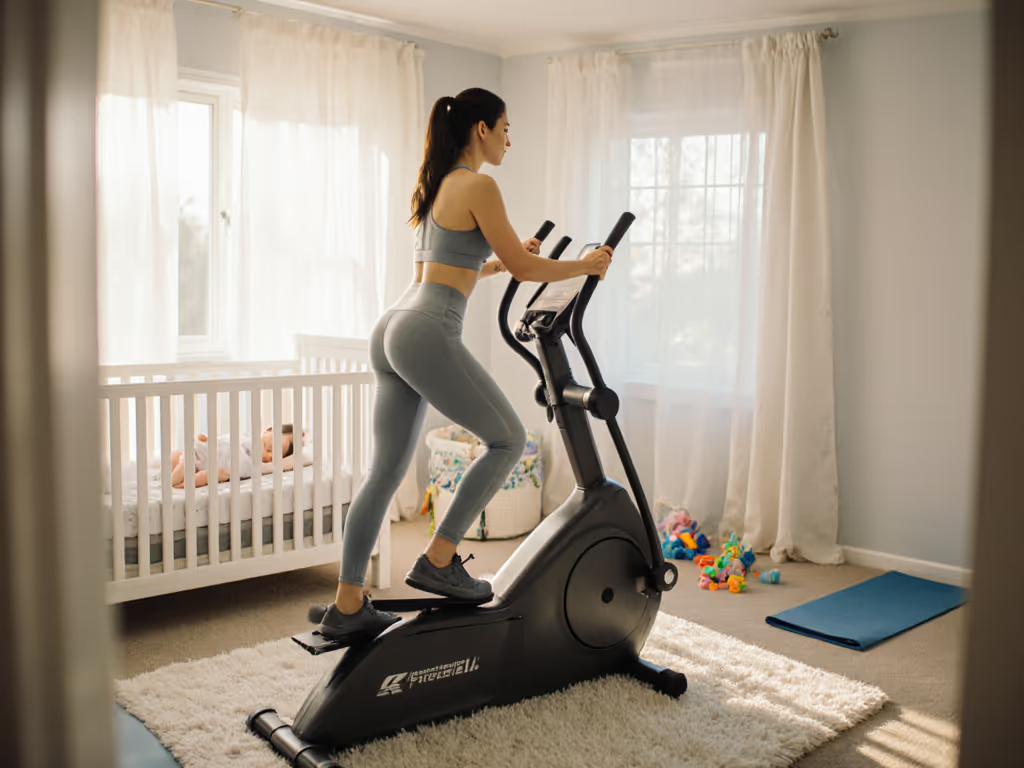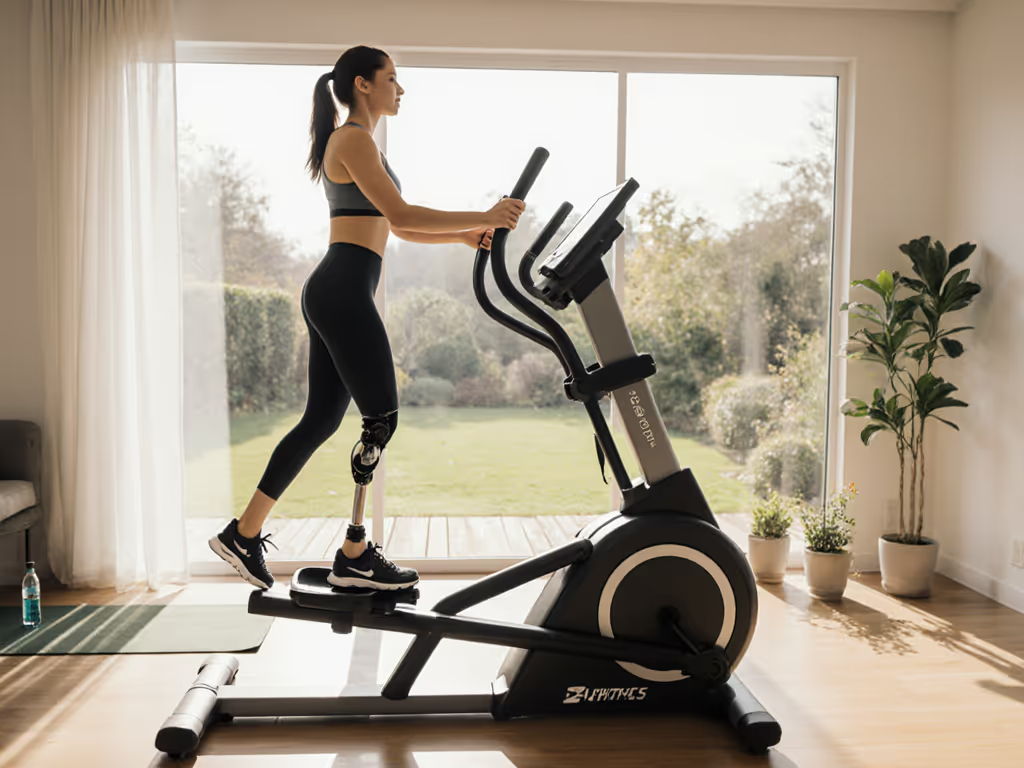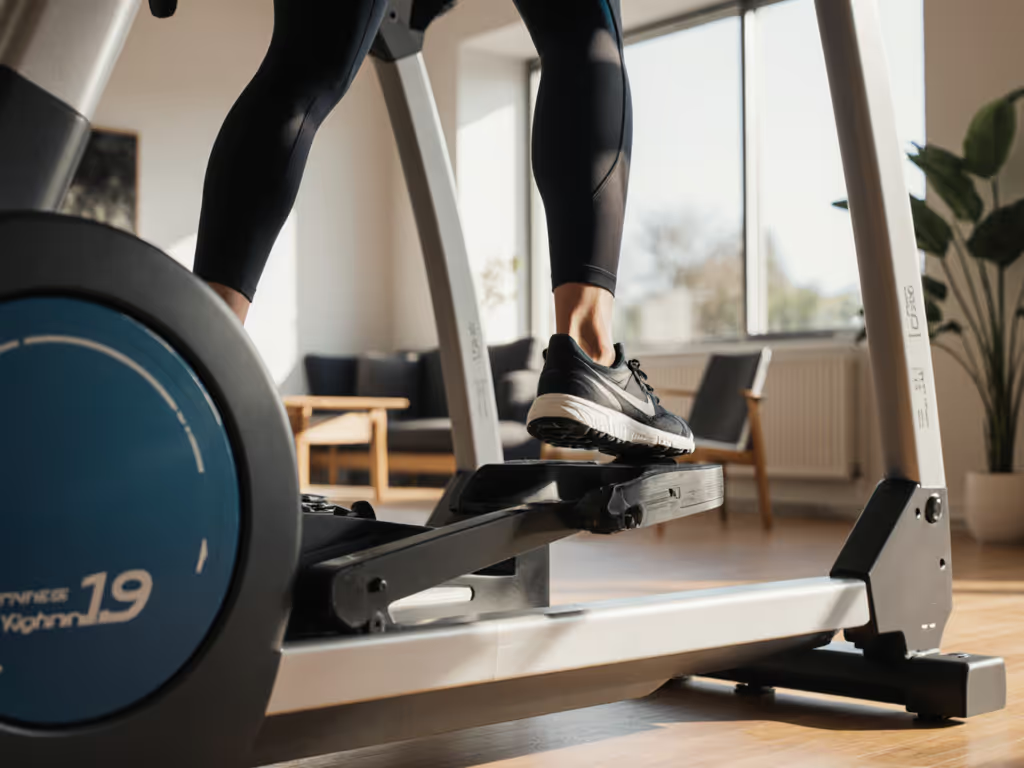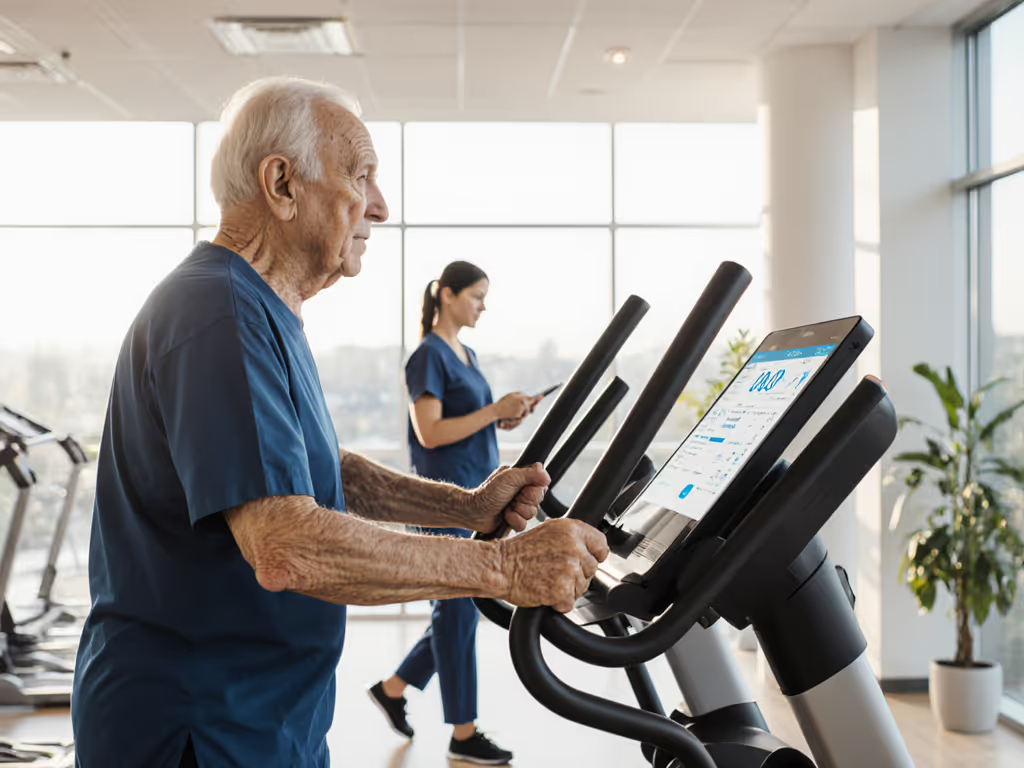
Elliptical Postpartum Recovery: Gentle Cardio Timeline

As a new parent, finding safe cardio after childbirth that fits your healing body and chaotic schedule feels impossible. But what if your fitness journey could start with the baby napping nearby? If noise matters during naps, see how magnetic vs air resistance affects sound levels in home workouts. That's where elliptical postpartum recovery becomes transformative, not as a high-impact grind, but as a tool for rebuilding you at your pace. I've seen time-crunched clients establish postpartum exercise elliptical routines in under 10 minutes daily because they prioritize sustainable comfort over intensity. This isn't about shrinking back into pre-pregnancy jeans; it's about honoring your body's wisdom while moving toward strength.
Why the Elliptical Fits Postpartum Like Nothing Else
Most new parents abandon cardio because traditional options overwhelm them physically or logistically. Running jars healing tissues. Treadmills demand spatial awareness you don't have while sleep-deprived. But the elliptical's magic lies in its gentle predictability:
- Zero impact on joints and pelvic floor: no jarring landings that strain diastasis recti or incisions
- Upright posture support that aligns spine, ribs, and pelvis without compromising core engagement
- Seated option availability for C-section recovery days when standing feels daunting
"Healthy posture (spine lengthened, pelvis neutral, ribs anchored) and healthy breathing (engage abs to spine on exhalation) turn low-impact cardio into core recovery," notes pelvic health research. This makes the elliptical for diastasis recti uniquely valuable when performed mindfully. For a deeper overview of low-impact benefits at home, see our elliptical for home use guide.
Unlike rebounders or jump-based cardio (which flood your system with pressure your healing body isn't ready to manage), the elliptical lets you control exertion through resistance dials, not momentum. And crucially, it accommodates your energy level: 5 minutes count when you're up at 3 AM. That's how tiny wins build lifelong habits.
Your Phased Timeline: Matching Motion to Healing
Forget arbitrary "6-week rules." Your postpartum fitness timeline should mirror your recovery, not social media or outdated guidelines. Always confirm with your provider first, but here's how to progress intuitively:
Phase 1: The Foundation (Weeks 1-6)
Focus: Reconnection, not exertion
For all deliveries: Begin with 5-minute walks when cleared (often day 3-10). Notice how your feet contact the ground. Feel your pelvic floor gently activate with each step. This builds neural pathways for safe movement long before gym equipment enters the picture.
After vaginal delivery: Around week 3, try seated elliptical glides at zero resistance. Keep sessions under 8 minutes. Your only goal: sitting tall while breathing deeply. If your C-section scar pulls or you feel pelvic pressure, return to walking.
After C-section: Wait until 6 weeks post-op minimum before attempting elliptical use. Start with 3-5 minutes of non-impact motion (arms only or seated), focusing on diaphragmatic breathing. As one pelvic floor therapist told me: "If your incision feels tight walking up stairs, it's not ready for coordinated movement."
Phase 2: Gentle Momentum (Weeks 7-12)
Focus: Consistency over intensity
Now's when pelvic floor safe elliptical technique becomes non-negotiable. I rebuilt my own routine here after a wrist injury sidelined kettlebells (using just two non-negotiables: zero setup friction and sessions short enough to finish before coffee). Your version might look like:
- Resistance: Start at level 1. Increase only if you maintain smooth form without gripping handles
- Stride: Shorten to 70% of max. Long strides strain healing tissues
- Duration: 10-15 minutes, max 3x/week. Two short sessions beat one grueling one
- Breathing: Exhale firmly as feet push back, which engages transverse abdominals without bracing
If you notice urine leakage, pelvic pressure, or diastasis gap widening during motion, regress to Phase 1. This isn't failure; it's data.
Phase 3: Sustainable Integration (Week 13+)
Focus: Joyful consistency
When cleared for full activity (often 12+ weeks for C-section), layer in habit-design principles that make cardio stick:
- Presets for decision fatigue: Program one 15-minute profile with soft-start resistance (e.g., 2-min warmup at level 2, 10-min steady at 4, 3-min cooldown)
- Posture anchors: Tape a reminder to your console: "Ribs down, crown lifted"
- Micro-routines: Pair sessions with existing habits (e.g., "While baby eats lunch, I move for 12 minutes")
Research confirms that women who prioritize gradual return to movement (like the elliptical postpartum recovery approach) report 32% fewer long-term pelvic health issues. This isn't about burning calories; it's about rebuilding body trust.
Critical Safety Anchors for Your Routine
Before pressing "start," implement these non-negotiables:
✅ The Posture Check
Stand beside the machine (don't mount yet). Adjust stride length until your hip, knee, and ankle form soft 90-degree bends at full extension. Knees should never lock or bow inward. If your shoulders hike toward your ears, the console is too high, a common issue in compact models. If space is tight, our compact elliptical guide explains how to balance footprint with stride comfort postpartum.
✅ The Breath-Test
Hold handles lightly. Inhale deeply into your ribs. Exhale while gently drawing lower abdominals toward spine. If you can't maintain this without gripping handles tightly, resistance is too high. Reset to zero and rebuild.
✅ The "Stop Now" Signals
Immediately dismount if you experience:
- Urine leakage or pelvic pressure
- Sharp abdominal pain (not muscle fatigue)
- Increased postpartum bleeding
- Dizziness or heart racing beyond "moderate effort"

Your First-Week Action Plan
Start tomorrow, not "when life settles." Print this checklist:
- Consult your provider about your specific recovery timeline (share this article if helpful)
- Measure your stride at home: Stand tall, step forward naturally. Measure heel-to-heel distance. This is your baseline stride length.
- Block 7 minutes tomorrow during baby's longest nap
- Set up your machine with:
- Lowest step-up height possible
- Resistance at zero
- One preset called "Start Here"
- Move only as long as you maintain relaxed breathing
Small, repeatable wins turn cardio into a lifelong habit. For mood support in the newborn phase, explore elliptical mental health. Whether you're working around a C-section scar, diastasis recti, or sheer exhaustion, elliptical postpartum recovery isn't about bouncing back; it's about building forward with compassion. Your strongest self emerges not from pushing through pain, but from honoring your body's rhythm. Tomorrow's session might be 4 minutes. That's not just okay; it's the foundation of everything that comes next.
Your next step: After today's walk, place one hand on your lower belly. Inhale for 4 seconds, exhale for 6 while gently drawing in. Do this 3x. This is where recovery begins (long before you touch a machine).




